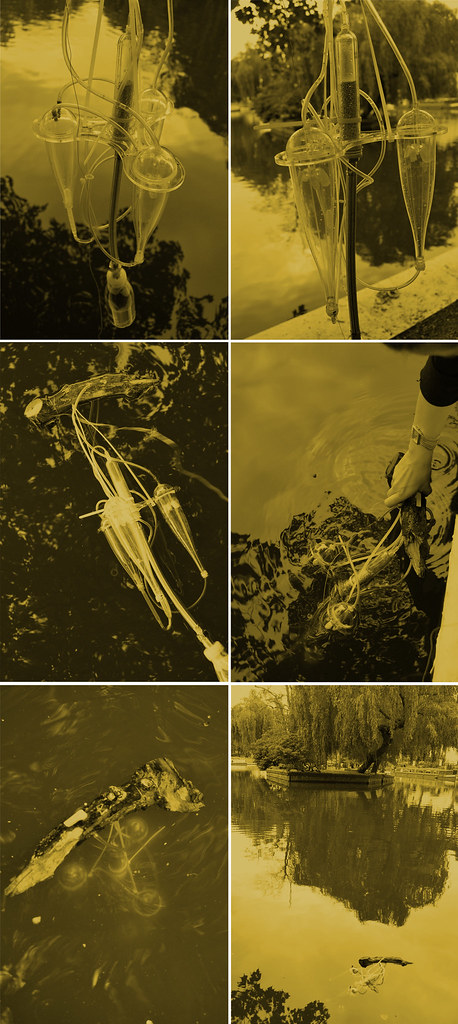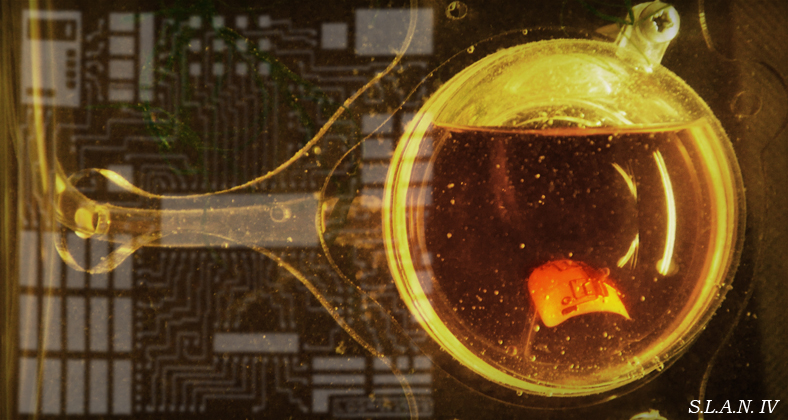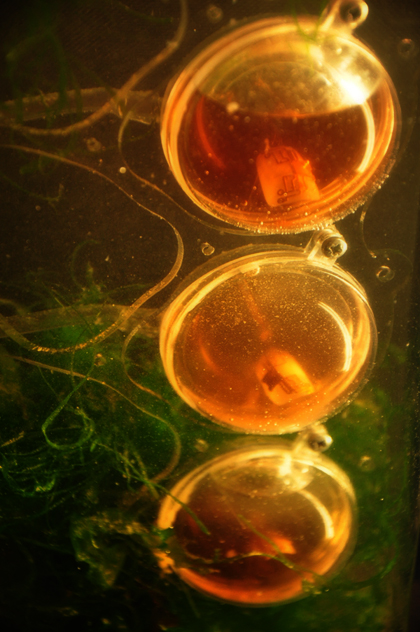
The concept of taking natural environment as a ‘ready-made laboratory’ with unlimited supply of ‘raw materials’ was the vigor behind F.U.N.Y. that cultivates diatom onto the artificial intelligent fingernails in an open water– where diatoms exist naturally. The idea then inspired the latest generation of diatom incubator that will be placed into a canal in London. A set of apparatuses sunk into the canal and turned the site into a diatom cultivating centre then activated the artificial nails manufacturing process right away.
The F.U.N.Y is a system that could easily setup by minimum a unit of floating incubator that contained a set of biodegradable S.L.A.N. scaffolds. A canal junction known as Little Venice by locals at Maide Vale where two major canals in London meet was spotted for this mission. Regent’s Canal that provides a link from the Paddington arm of the Grand Union Canal to the Limehouse Basin and the River Thames in east London conjunctions with Grand Junction Canal that forms the southern half of the Grand Union Main Line from London to Birmingham creates a very unique geographical landscape which also serves a roundabout for boats. A roundabout island in the middle of the junction that is currently inhabited by swans and ducks is almost like a reserved wild life island in the city of London.
The prototype was being designed as homage to David Greene’s Rockplug/Logplug project where connection for local networks were being installed into natural elements found in around the suburbs. To address general public over-reacted awareness towards any biological related projects, F.U.N.Y. tends to update Greene’s project in the notion of biotech, where the natural element was used as to camouflage rather than to blend into nature as Greene’s proposed in the Rokplug/Logplug project. Nevertheless, it seems like the Rokplug/Logplug project has inspired inventions more of a camouflaged high tech device for example the bluetooth enabled, data transmitting rock used by British spies in Moscow that enables communication with it via their PDAs or mobile phones. As a side note, the F.U.N.Y. prototype was illegally placed in the canal and successfully camouflaged itself with the floater made of tree branch.




